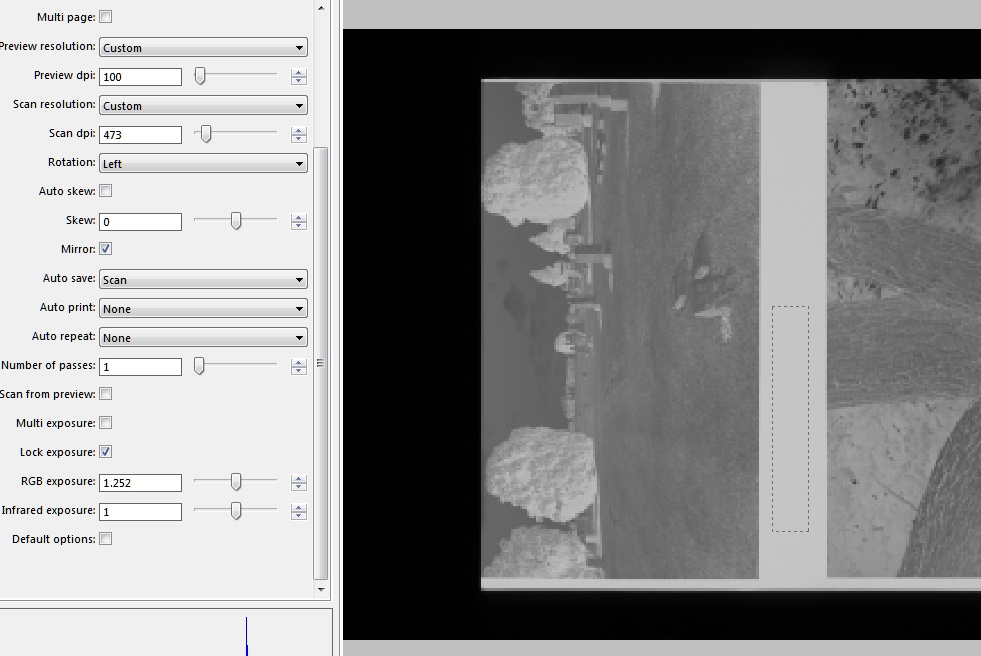Err, what?
When making contact sheets, you want to keep things consistent. Film base exposes to just shy of black on the paper and highlights fall wherever they will at grade 2. That informs you whether you blocked up shadows or not, and what might be a reasonable contrast grade to use for a fine print.
Yes, but…what?
The film base (or more accurately, base plus fog) represents the absolute lightest shade on the film. No exposed part of the film can be lighter, and consequently no part of the print can be darker than the film base.
So film base plus fog is important in making contact sheets. I really, really don’t want to have to run a test strip every time I make a contact sheet. This is not the “fun” part of darkroom work any more than making digital contact sheets was fun. It’s a necessary step, that’s all, and having to run a test strip every time just makes it even less fun (I have nothing against test strips, I enjoy that part of the printing decision-making process, picking my area of interest and wrestling the tones into place. It’s a challenge, unique to every negative and paper combination. Contact sheet test strips, on the other hand, are not a challenge. Expose expose expose expose develop which strip is most black? No artistic interpretation required. At all.)
Anyway, my point: if I can keep things as consistent as possible where the film is concerned, I can keep my contact sheets consistent without having to test constantly to find the right time. One exposure to rule them all, and in the darkroom, bind them.
I love both Tri-X and Ilford HP5+. Visually, it has always seemed that while my HP5+ has very consistent base tone, my Tri-X can get a bit…variable. My process isn’t that wobbly. Really. Now I don’t have a fancy densitometer, but I do have a film scanner and Vuescan (which has an exposure lock feature intended to set exposure off the film base).

Using VueScan to measure base+fog on a strip of film. Note the selection area and the “RGB Exposure” lock settings on the left side. All 5 rolls of HP5+ were within a couple of hundredths of this one. Tri-X varied more but not enough to warrant testing every time.
So I used what I had, like the resourceful little maker I am.
I found that the 5 rolls of HP5+ I tested were incredibly similar. This is despite their being developed at various temperatures in the 70-74F region, with times I was still trying to decide on. They were all fixed in Kodak Hardening fixer (not recommended BTW with HP5+ unless you enjoy reverse cupping, I guess Ilford recommend non-hardening fix for a reason!)
The Tri-X, by comparison, had much more variation, though still within a narrow enough range that I’d be OK using the same exposure time.